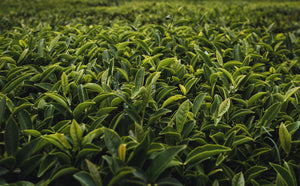Like most crops, the production of tea is fairly complex. Here we give a brief summary of how different teas are produced around the world.
- What is tea made from?
- What’s the difference between these types of tea?
Although the various classifications of tea normally indicate something about its appearance and character, the classifications themselves are determined by the way the tea is processed.
White tea

White tea is the rarest type of tea and is named after the tiny white or silver hairs on the tea bud as it develops at the tip of the shoot. Once the new buds have been plucked, they are dried in the fresh air.
Originally the preserve of the Fujian province in China, white tea is now produced in other parts of the world using different tea plants. The finest white teas are made only from the new leaf bud plucked early in the morning before they unfurl. But not all white teas look the same. Others are made from the new bud and two young open leaves, or just simply the young open leaves.
When brewed, white tea should produce a very pale liquor with a light, sweet flavour. Due to the lack of processing, the antioxidant levels are said to be highest of all in white tea.
Buy our white tea here.
Green tea

Matcha green tea is made by grinding down Tencha, a finely chopped Japanese green tea with shaded bushes. Its slightly larger leaves are harvested, steamed and dried but not rolled. Instead the veins and stems of the leaf are removed and the remaining parts are ground down.
Buy our green tea here.
Oolong (blue) tea

Buy our oolong tea here.
Black Tea

There are two types of processing for black teas – larger, whole leaf ‘orthodox’ processing and ‘CTC’ processing which stands for ‘cut, tear and curl’. Developed in the 1950s with the advent of the teabag, the latter uses a machine to literally cut, tear and curl the tea to produce small leaf tea that produces a quicker, stronger brew.
Buy our black tea here.

